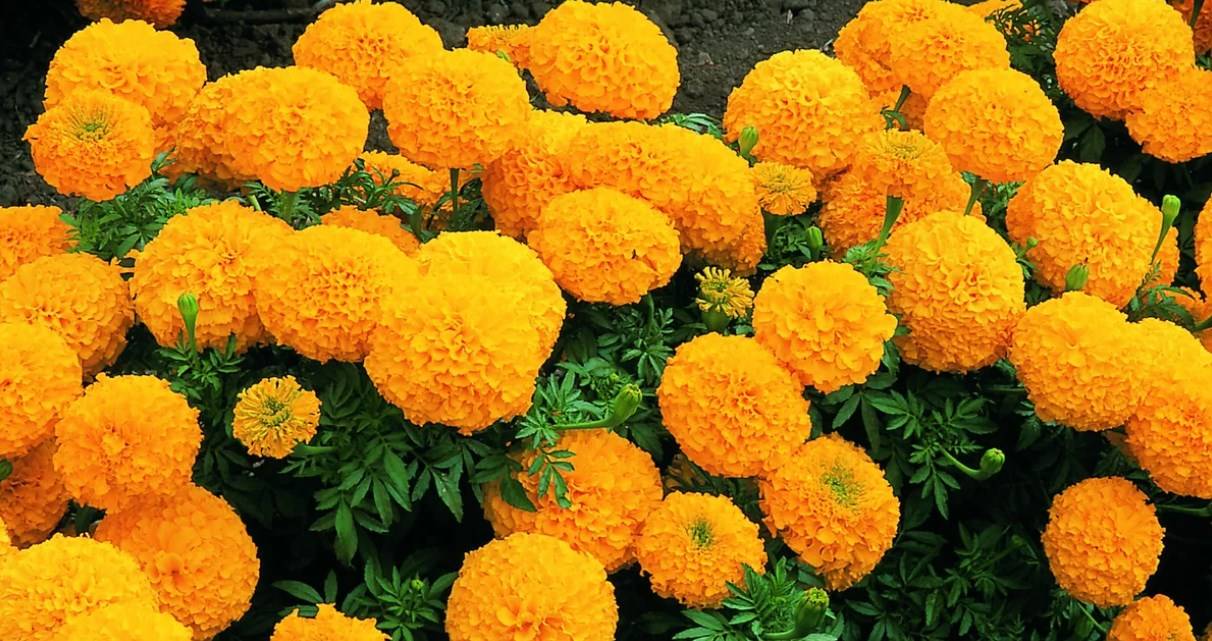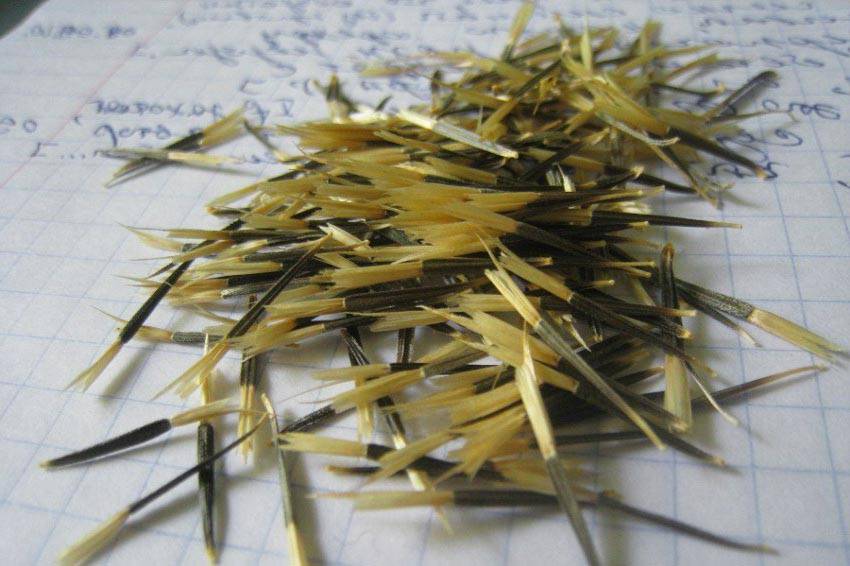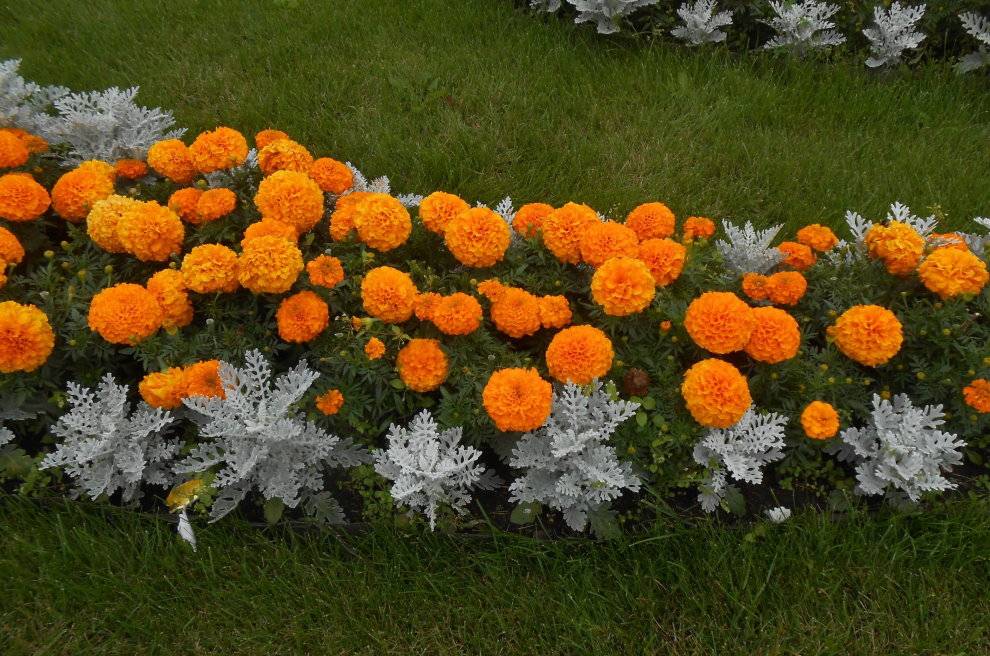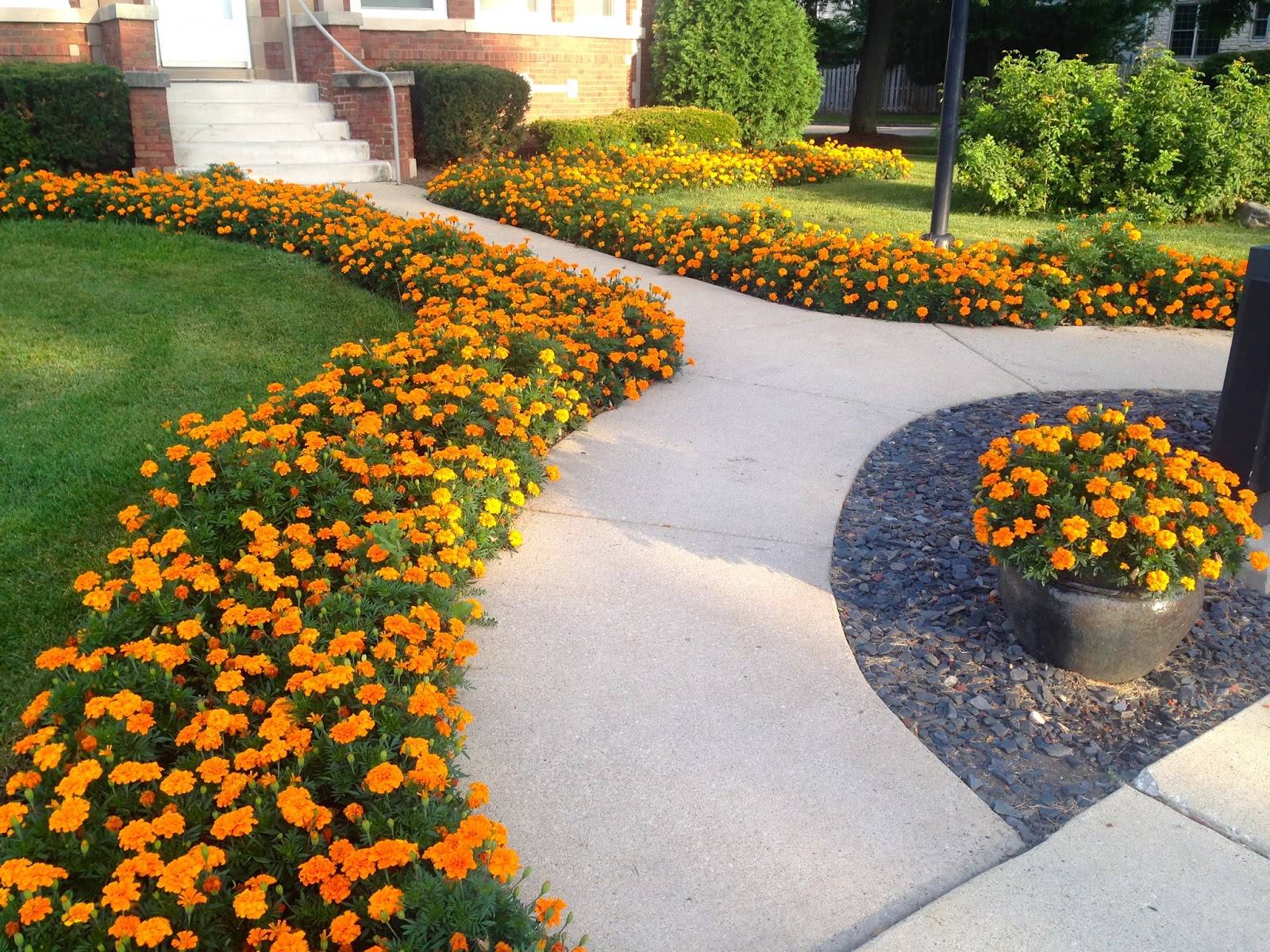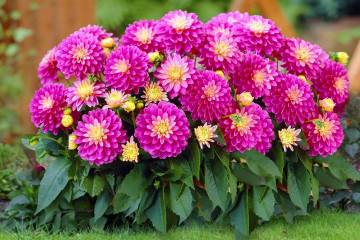Marigolds - planting and care in the open field
Content:
Marigolds are flowering perennials or annuals that belong to the Asteraceae or Asteraceae family. In the wild, they grow in Central and South America. Since ancient times, Indian tribes have used plants for their rituals, as well as for the treatment of many diseases. In Europe, culture first appeared in the 16th century.
Marigolds: description and characteristics
Depending on the varietal affiliation, the bush is formed from erect or branched shoots. The root system is developed, fibrous. Leaf plates are divided into pinnately dissected or pinnately dissected. The color is uniform from pale green to dark, the surface is matte.
In formed flower baskets, petals are characterized by almost all shades of brown, orange and yellow. During flowering, a pleasant, rich aroma exudes from the plant, and it stands out more strongly from the leaves, and not from the flowers.
Subject to agrotechnical rules, the flowering is not only lush, but also long-lasting. It starts from the first days of June, and ends with the arrival of the first cold weather. After flowering, a linear achene is formed. Such plants guarantee lush self-seeding. Seed germination can last for 3-4 years.
Depending on the variety, the plants can be either annual or perennial.
Healing properties
Due to the fact that the aboveground part of the plant has a rich chemical composition, the culture is used for medicinal purposes. For example, foliage contains a high concentration of lutein, which prevents the development of cataracts. Also, marigold-based formulations are effective for diabetes and pancreatic diseases.
A decoction of marigolds can eliminate anxiety, normalize the nervous system, and relieve stress. That is why in case of depression and neurosis, experts recommend their patients to take baths with similar decoctions.
Marigolds fine-leaved: cultivation
Before figuring out how to plant marigolds, you need to familiarize yourself with the main features of the thin-leaved species. Perennial plants reproduce by self-sowing, capturing ever larger areas. They are preferred by gardeners who do not like to devote much time to the flower garden.
In the second year, flowering is usually more lush than in the first year after planting.
Marigolds: growing from seed, when to plant
The sowing method of propagation is easy to implement and takes little time. Thus, the culture can be grown on the windowsill, along the paths, in the flower bed and in the garden. The seed has excellent resistance to low temperatures, from which it can winter in the open field. You can sow marigolds in the fall.
How to collect marigold seeds
First of all, it is necessary to analyze the appearance of all flowers and mark with the most lush and attractive blooms. You need to wait until the inflorescences dry up, and the stems acquire a brown color, and only then collect the seed boxes. It is recommended to collect the seed pods on a dry and sunny day.
Perennial marigolds: planting and care in the open field
Quite a few are wondering how to plant marigolds in open soil. Marigold seedlings are planted in the spring with the arrival of cold weather. The chances of frost should have already passed, and the site should be sunny with loamy or sandy soil. The culture can grow in conditions of shade and partial shade, but in the sun it will be more active and enchanting.
In the selected area, grooves are digged with a depth of about 5 cm, after which the seeds are poured there and carefully covered. If the seedlings are too frequent, a pick is carried out and the culture is planted.
Marigolds for seedlings: when to plant
It is necessary to grow marigolds taking into account the weather and climatic conditions where they grow. Planting times may vary from mid-March to early May. It is necessary to calculate so that after 1.5-2 months the frost ends. For example, in the Moscow region, the most favorable period is late April-early May.
The seeds are able to lie all winter in the soil without damage, but the plants are likely to die.
Soil preparation
The soil must be absolutely nutritious, it is recommended to mix it in equal proportions with humus, sand, peat and turf. At the bottom of the container with seedlings under the soil layer, lay out a drainage layer of small stones, expanded clay and / or sand. Thanks to this approach, excess moisture will not linger at the root system, which can provoke rotting.
To prevent the development of diseases, before planting, the soil is treated with solutions of potassium permanganate (potassium permanganate) or fungicide.
Seed preparation
Immediately before planting, you need to prepare the seeds. To do this, they are wrapped in a damp cotton cloth for several weeks, put in a plastic bag and left warm. One of the main conditions is that the air temperature should not rise above +25 degrees. If the temperature in the room fluctuates between + 15-20 degrees, then after a week the first shoots should appear.
The seeds can now be sown in the prepared soil. The depth of the furrow is about 2 cm, with an interval of about 2 cm too. To speed up the process, the container can be covered with polyethylene fiber on top to create a greenhouse effect. The soil should always remain moist. Regular airing will prevent the development of fungal diseases.
Seedling care
Plants are picky, but they like to grow in sunny areas, so it is better to place seedlings on windowsills on the south side, but it is better to avoid direct sunlight.
When 2-3 leaves appear on the seedlings, it will be superfluous to carry out a pick - transplanting plants into separate containers. This will ensure rapid growth and development of the root system. You can use ordinary soil with the addition of a small amount of nitroammophoska and ash.Fertilizing with potassium, phosphorus and nitrogen will also have a good effect on the state of the culture.
If there is no time and opportunity to do all of the above manipulations, in June you can sow seeds directly into open ground, then water abundantly and remove weeds. In the second half of summer, closer to August, the culture should already bloom.
Caring for marigolds in flower beds
This blooming culture is perhaps the most unpretentious of all. Only calendula is easier to care for. They can be watered calmly no more than once a week.
To prolong flowering and leave it lush, growers recommend removing old inflorescences by breaking them out. Many are wondering how to plant marigolds, or rather transplant. Marigolds tolerate transplantation well at any age. Throughout the summer, they can be transferred from one site to another, and with the arrival of cold weather, they can be transferred to a pot with a lump of earth.
The answer to the question of how to feed marigolds for abundant and long flowering is commonplace. You need to feed at least three times, at the beginning of the growing season these are nitrogen-containing compounds for building up green mass and the root system, in the second half of summer, potassium-phosphorus fertilizers are used. You cannot fertilize the plant with fresh manure.
Marigold disease prevention and pest control
During flowering, marigolds exude a rather rich and specific aroma that repels pests. However, during prolonged rains, snails and slugs may appear on the bushes. To prevent their appearance, it is recommended to place a container filled with bleach over the area of the flower garden.
During a period of persistent drought, the plant is more susceptible to attacks by spider mites. To prevent its appearance, it is necessary to regularly and moderately water the flower beds. If the pest nevertheless infected the bushes, then it should be irrigated with infusions of yarrow or hot pepper.
Marigolds are unpretentious and easy-to-care plants that, thanks to their bright color and lush flowering, are able to transform any garden plot.
